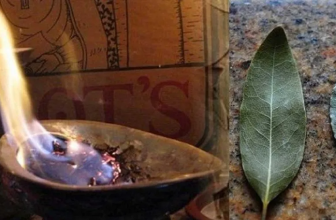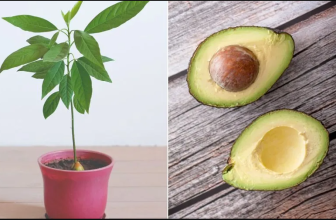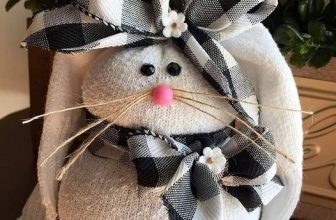

Damp walls can be a real problem in your home and can lead to serious issues such as mold. However, there are some simple home remedies that you can use to prevent the problem from getting worse. There are also other ways that you can use to get rid of damp walls, depending on the extent of the problem and how much time and money you’re willing to invest in it. Let’s look at some of the more effective ways that you can tackle this minor but annoying home problem.
Change the Location of Your Humidifier
If you have a humidifier installed in your home, you should check the placement and location of it. It is important to place the humidifier in a location that is not near the walls, or it can cause the walls to get wet. If this happens, you can get rid of the damp walls by moving the humidifier. The primary purpose of a humidifier is to increase the humidity level in your home. Too little humidity can result in dry and itchy skin, irritated throats and sneezing. It can also cause cracked and peeling finger-nails, static electricity and frizzy hair. On the other hand, too much humidity can lead to the growth of mold and bacteria.
Using Vinegar
Vinegar is a great, natural cleaning solution. Research has shown that it’s one of the best ways to get rid of damp walls and prevent mold from growing. It acts as a natural disinfectant and deodorizer, and works to neutralize the pH level in your home. To use vinegar to get rid of the damp walls, mix 1 part vinegar to 7 parts water. Then, mix the solution in a spray bottle and apply it to the walls. Make sure to apply the solution to the walls and let it sit for at least 4 hours before wiping it off. You can also cover the walls with a towel and spray the solution on it. After 4 hours, simply throw out the towel and you’re done!
Getting Rid of damp walls With Baking Soda
Baking soda is another natural solution that you can use to get rid of damp walls. Simply mix baking soda with water and apply it to the walls. Let it sit for a while and then wipe it off. You can also mix baking soda with vinegar and water to get rid of the damp walls. Again, let the solution sit for a while before you wipe it off. Baking soda is a great deodorizer, so it will also help to reduce the musty smell in your home. It will also act as a natural disinfectant and help to maintain a neutral pH level in your home.
Fix Leaks – The Biggest Cause of Damp Walls
The biggest cause of damp walls is a leak in your home that leads to excessive moisture. If there is a leak in your home, you need to find and fix it as soon as possible. Otherwise, it will lead to more problems, such as mold. Many homeowners choose not to fix leaks themselves, but they don’t want to call a professional either. If you’re in this situation, there are a few things that you can do to get rid of the damp walls while you’re waiting to get the leak fixed. You can try covering the walls with plastic sheeting, or you can spray on some caulking or use a sponge to soak up the water. If you cover the walls with plastic sheeting, make sure that you seal the edges so that the walls don’t get ripped up and torn. You can also place towels or rags over the leak and press it against the wall. This will help to soak the excess water.
Install a Ventilation Fan
If there is too much moisture in your home, you can get rid of the damp walls by installing a ventilation fan near the affected area. This will help to remove the excess moisture from the air, and will lead to the reduction in the level of humidity in your home. You can fix this problem without having to invest in expensive equipment by setting a slow-running bathtub or kitchen sink faucet to create a drainage system. Once you’ve fixed the leak, you can turn the water off and set the faucet to a slow drip. This will help to prevent the walls from getting too wet and increase the level of humidity in your home.
Treat damp walls With Lemons
Lemons are an excellent natural cleaning solution that you can use to treat damp walls. They are good deodorizers and help to get rid of mold and mildew. You can either mix lemon juice with water and apply it to the walls, or you can simply squeeze a lemon and spray the juice on the walls. If you mix lemon juice with water, make sure that the mixture is not too potent, otherwise you might damage the wall. Alternatively, if you use pure lemon juice, you can dilute it with water afterwards.
Don’t hang clothes to dry inside
Most people hang clothes to dry on a laundry rack inside their home. While this is convenient, it can lead to damp walls where the rack is located. You can get rid of damp walls by moving the laundry rack outside the home or by drying the clothes in the dryer. Alternatively, you can install a drying rack inside the home. Drying clothes inside increases the level of humidity inside your home. This can lead to mold and mildew growing on the walls, which is not only unsightly, but it can also be harmful to your health. Therefore, you should avoid drying clothes inside and keep the humidity level in your home low.
Damp walls are not only unsightly, but they can also lead to the growth of mold and bacteria. Therefore, it’s important to tackle the problem as soon as possible. There are many ways that you can do this. You can change the location of your humidifier, or you can fix leaks to prevent the walls from getting too wet. Alternatively, you can install a ventilation fan near the area, or you can use lemon juice to treat the walls. No matter which method you choose, you should see results within a few days.





GIPHY App Key not set. Please check settings